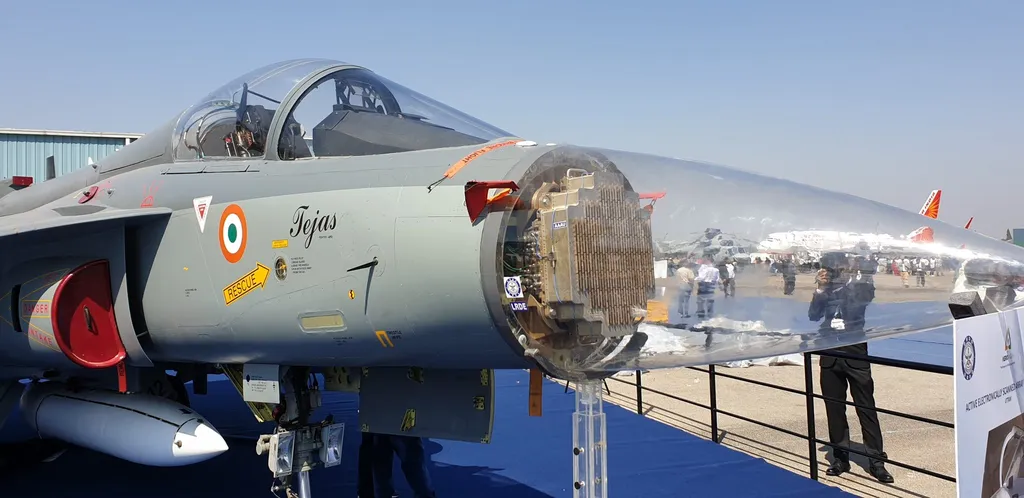In a bold move that underscores India’s growing confidence in its domestic defence capabilities, the Indian Air Force (IAF) is set to equip its new fleet of 97 Tejas Mk1A aircraft with the indigenously developed Uttam Active Electronically Scanned Array (AESA) radar. This decision not only aligns with the government’s Atmanirbhar Bharat (self-reliant India) initiative but also marks a significant milestone in India’s push for technological sovereignty in advanced military systems.
The Uttam AESA radar, engineered by the Defence Research and Development Organisation’s (DRDO) Electronics and Radar Development Establishment (LRDE), represents a leap forward in radar technology. Unlike traditional mechanically steered radars, AESA systems use an array of small modules to electronically direct radar beams, enabling near-instantaneous tracking of multiple targets in the air, on land, or at sea. With a detection range exceeding 150 kilometres for fighter-sized targets, the Uttam radar enhances the Tejas Mk1A’s combat effectiveness and survivability, making it a formidable asset in modern aerial warfare.
To ensure timely production of the radar systems, Hindustan Aeronautics Limited (HAL) is exploring a dual-vendor approach. This strategy, pending the evaluation of the primary bidder’s capacity, aims to mitigate potential supply chain bottlenecks—a common challenge in large-scale defence projects. “We are proactively managing the supply chain to avoid delays,” said a senior HAL official. “A dual-vendor model will help maintain production momentum and ensure we meet the IAF’s operational requirements.”
The Tejas Mk1A, an upgraded variant of the Light Combat Aircraft (LCA), already boasts over 60% indigenous content, including the Uttam radar, an advanced electronic warfare suite, and a modern cockpit system. Powered by a General Electric F404 engine, the aircraft can be armed with a mix of indigenous and imported weapons, such as the Astra Mk1 beyond-visual-range air-to-air missile and the Python-5.
The new order for 97 Tejas Mk1A jets, expected to be worth around ₹60,000 crore, will supplement the 83 aircraft already procured in a ₹48,000 crore deal in 2021, bringing the total fleet to 180. These aircraft will form nine squadrons, playing a pivotal role in replacing the IAF’s aging MiG-21 fleet. To meet this demand, HAL is ramping up production, targeting the delivery of 24 jets annually from its Bengaluru and Nashik facilities.
The IAF’s commitment to the Tejas platform extends beyond the Mk1A, with plans to acquire 170 units of the more advanced Tejas Mk2 in the future. The Mk2, like its predecessor, will also integrate the Uttam AESA radar, ensuring a sustained legacy for India’s homegrown defence technology.
The dual-vendor strategy is not just a logistical safeguard but also a strategic move to foster competition and innovation within India’s defence industrial ecosystem. The final decision on splitting the radar production order will hinge on whether the primary vendor can meet the project’s demanding timeline. The vendor selection process will commence after the main contract for the 97 aircraft is signed, anticipated by the end of 2025.
This procurement underscores India’s determination to reduce reliance on foreign defence suppliers and strengthen its position as a global leader in aerospace and defence technology. As the IAF modernises its fleet, the Tejas Mk1A and its advanced Uttam radar will stand as testaments to India’s growing self-sufficiency and technological prowess.

